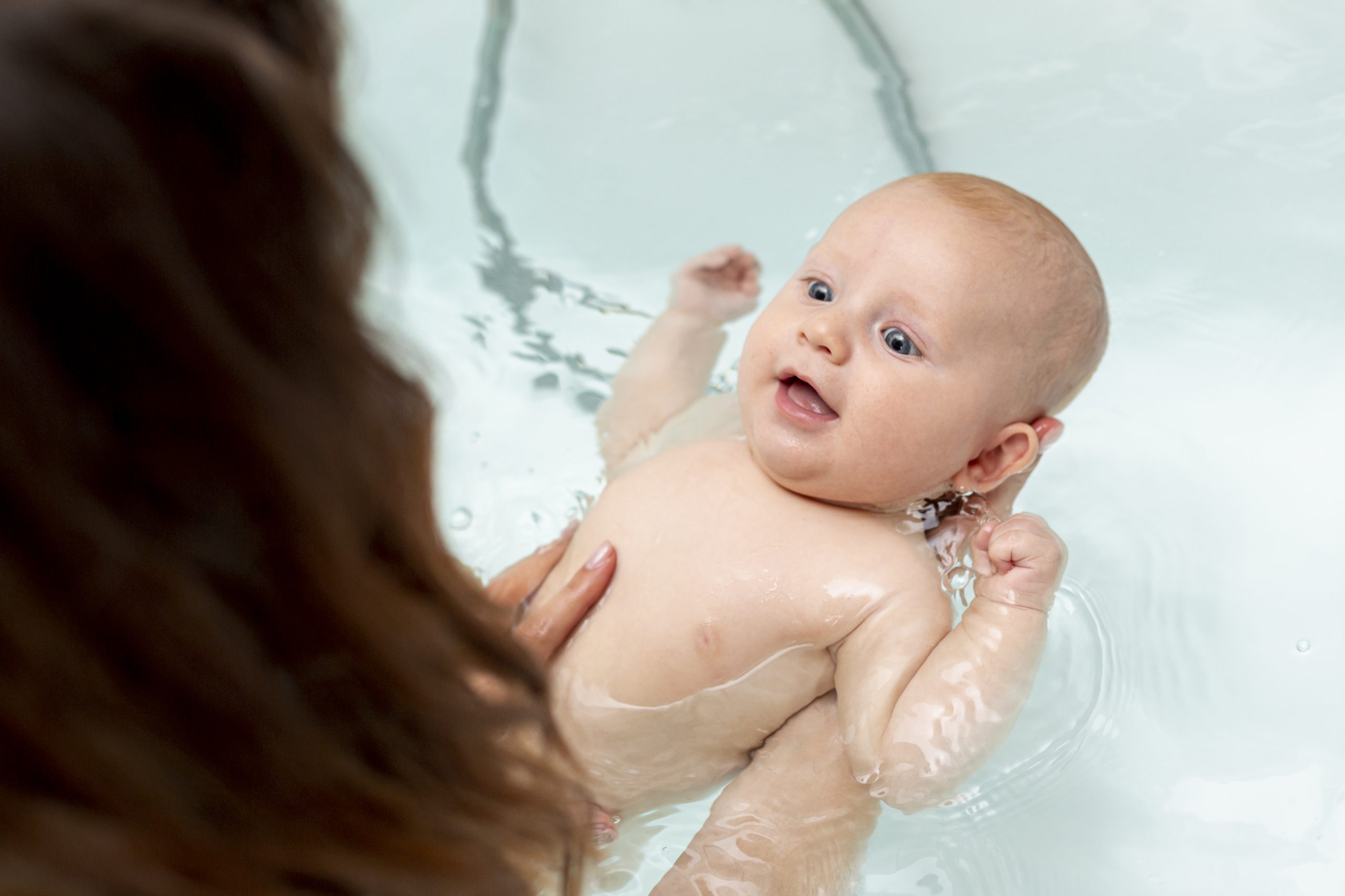

After evaluating cases of young infants treated for bathing-related scald burns at the academic health system’s burn center, researchers from the University of Chicago Medicine are pushing for updated newborn bathing recommendations. According to a recent study, roughly 95 percent of burns experienced by infants while bathing involved rushing water.
“The majority of children under three years old admitted for scald burns while bathing involved running water,” said study author William Moser, MD, who was a pediatric resident at UChicago Medicine Comer Children’s Hospital at the time of the study and is now a child abuse pediatrics fellow at Lurie Children’s Hospital. “These cases are not abusive or negligent. We can’t blame parents for not knowing about something that’s not featured in current guidelines.”
Current bathing recommendations from top pediatric organizations such as the American Academy of Pediatrics, according to Moser, instruct caregivers to check the water temperature before putting the kid in and to remain present throughout the bath. However, they do not take into consideration situations such as a child being placed in a sink as it is filling up or a faucet handle being accidently knocked or kicked.
“The vast majority of children bathed in sinks are not going to get burned,” said Moser. “But when they do get burned, it’s bad. I don’t think people realize how bad these burns can be.”
According to Moser, the burns frequently occur in fractions of a second – faster than a baby’s reaction time to begin wailing, let alone an adult’s reaction time to pull a youngster out of harm’s way. Children are also more likely than adults to sustain serious burns due to their smaller bodies, thinner skin, and developmental phases that may impede their ability to withdraw themselves from hot water.
Between 2010 and 2020, 101 juvenile patients under the age of three were brought to UChicago Medicine’s Burn Center with bathing-related scald injuries. Researchers looked at risk factors such as whether there was running water, whether the water temperature was checked before placing the kid in the water, and whether a caregiver was present throughout the bath. Thirty-seven of the 101 cases had only one of these three risk variables, with flowing water being the vast majority of those 37.
Veena Ramaiah, MD, is a board-certified child abuse pediatrician and an associate professor of pediatrics at Comer Children’s Hospital. She is a member of the Child Advocacy and Protective Services team, which analyzes every pediatric youngster under the age of three who is admitted for burn damage in order to provide expertise on concerns or suspicions of abuse or neglect. According to her, the vast majority of these burn instances do not fall into those categories and are unintentional due to parental ignorance of the risks.
“In addition to children suffering long-term physical and psychological consequences from these burns, cases often get reported to the Illinois Department of Children and Family Services for investigation,” said Dr. Ramaiah. “Many physicians don’t know about running water as a risk factor. Even if a caregiver is standing right next to a baby in the bath, they can’t control how fast these burns happen.”
While data exists on the benefits of safety measures such as water heaters with temperature control mechanisms, the study authors stated that getting laws approved that would mandate house and building owners to install these equipment has had various degrees of success around the world.
“This is a tough issue to address wholesale,” said Moser. “Fixtures with built-in safety mechanisms aren’t cheap. It really starts with educating caregivers on the risks they have the ability to mitigate.”
The authors of the study recommend that caretakers fill a tub or sink, turn off the faucet, and then check the temperature of the standing water to ensure it is safe. Only then should parents or caregivers immerse their children in water. People should also examine the distance between knobs and faucet handles and themselves and the child – the greater the distance, the less likely they will be accidently switched on or off. This is especially prevalent when newborns are bathed in sinks with hot and cold water knobs that the child may easily reach.
more recommended stories
 Silica Nanomatrix Boosts Dendritic Cell Cancer Therapy
Silica Nanomatrix Boosts Dendritic Cell Cancer TherapyKey Points Summary Researchers developed a.
 Vagus Nerve and Cardiac Aging: New Heart Study
Vagus Nerve and Cardiac Aging: New Heart StudyKey Takeaways for Healthcare Professionals Preserving.
 Cognitive Distraction From Conversation While Driving
Cognitive Distraction From Conversation While DrivingKey Takeaways (Quick Summary) Talking, not.
 Fat-Regulating Enzyme Offers New Target for Obesity
Fat-Regulating Enzyme Offers New Target for ObesityKey Highlights (Quick Summary) Researchers identified.
 Spatial Computing Explains How Brain Organizes Cognition
Spatial Computing Explains How Brain Organizes CognitionKey Takeaways (Quick Summary) MIT researchers.
 Gestational Diabetes Risk Identified by Blood Metabolites
Gestational Diabetes Risk Identified by Blood MetabolitesKey Takeaways (Quick Summary for Clinicians).
 Phage Therapy Study Reveals RNA-Based Infection Control
Phage Therapy Study Reveals RNA-Based Infection ControlKey Takeaways (Quick Summary) Researchers uncovered.
 Pelvic Floor Disorders: Treatable Yet Often Ignored
Pelvic Floor Disorders: Treatable Yet Often IgnoredKey Takeaways (Quick Summary) Pelvic floor.
 Urine-Based microRNA Aging Clock Predicts Biological Age
Urine-Based microRNA Aging Clock Predicts Biological AgeKey Takeaways (Quick Summary) Researchers developed.
 Circadian Control of Neutrophils in Myocardial Infarction
Circadian Control of Neutrophils in Myocardial InfarctionKey Takeaways for HCPs Neutrophil activity.

Leave a Comment